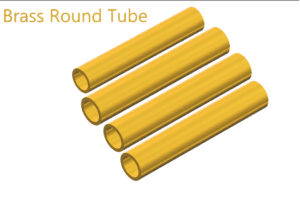Comparing Brass and Copper
Comparing Brass and Copper: Properties, Manufacturing and Applications
“Brass vs Copper: Understanding the Key Differences in Properties and Applications”
Brass and copper are two of the most widely used metals in the world, with each having its own unique set of properties, applications, and advantages. While these metals are often used interchangeably, there are some significant differences between brass and copper that make each metal suitable for specific applications. In this article, we will explore the key differences between brass and copper, including their chemical and physical properties, manufacturing processes, and applications.

Chemical and Physical Properties
Brass is an alloy of copper and zinc, while copper is a pure metal. The composition of brass can vary depending on the desired properties and applications, but the most common type of brass is made up of approximately 60% copper and 40% zinc. This composition gives brass its unique yellow-gold color and makes it resistant to corrosion and wear.
Copper, on the other hand, is a soft, malleable metal that is known for its high electrical and thermal conductivity. It is also resistant to corrosion, but to a lesser extent than brass. Copper has a reddish-brown color and is often used in its pure form, although it can also be combined with other metals to create alloys.
Manufacturing Processes
Brass is typically produced by combining molten copper and zinc, which are then mixed and cooled. The resulting alloy is then poured into molds to create the desired shape. This process is known as casting, and it is the most common method used to produce brass components.
Copper is typically produced through a refining process that starts with the mining of copper ores. These ores are then processed to extract the pure copper, which is then processed further to create the desired shape and size. Copper can be produced through casting, rolling, or forging processes, depending on the desired end product.
Applications
Brass is widely used in a variety of applications, including plumbing fixtures, musical instruments, and decorative items. It is also used in the construction of electrical components, such as connectors and terminals, due to its resistance to corrosion and wear.
Copper is widely used in electrical applications due to its high conductivity, and it is also commonly used in the construction of pipes, tubes, and wire. Copper is also used in the production of coins, jewelry, and other decorative items, as well as in the manufacturing of heat exchangers and other heat transfer equipment.

Conclusion
Brass and copper are two of the most widely used metals in the world, each with its own unique set of properties, applications, and advantages. While both metals are used for various applications, brass is typically used in plumbing fixtures, musical instruments, and electrical components, while copper is used in electrical applications, pipes, tubes, and wire. Understanding the key differences between brass and copper is important for selecting the right metal for specific applications and for making informed decisions about the use of these metals in various industries.
Comments are closed.